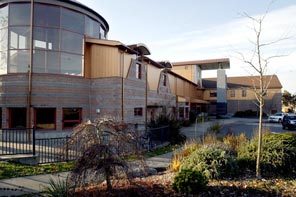Seattle Times columnist Jerry Large writes a thoughtful piece today about the true causes of inequity in public education and the troubling aspects of the latest "education reform" agenda. He cites Gerald Bracey, the sensible public education champion and essayist who recently passed away in Pt. Townsend.
It's worth noting that if Washington state is allocated Race to the Top funding, whose total budget is $4.1 billion for the entire nation (of which only 10-20 states will be deemed worthy), it would amount to an estimated one-time-only infusion of about $200-400 million. That's better than a kick in the pants, as my grandpa used to say, but is it worth changing our laws, trampling the will of the voters and embracing flawed and failed "solutions" that may do more harm than good just to get this money? Why don't we instead invest in what already works in our schools and replicate that? If the Seattle school district has the money for 110 "teaching coaches" as SPS parent Meg Diaz's recent analysis showed, why doesn't it fund more actual teachers instead and lower class sizes?
Here's my response:
Thank you, Jerry, for taking a closer and thoughtful look at the latest incarnation of "education reform." Bracey (RIP) was right: poverty is a major underlying factor that affects a child's chances at having a solid learning experience in school.
Rather than addressing this difficult issue of societal inequity, the "education reformers" are instead pushing privatization of a public resource (again -- see past efforts to privatize social security, push for vouchers, etc) with lots of strings attached, endless testing, and blaming teachers. They are also trampling over the rights of local school districts and states to decide what works best for them and instead demanding they change their laws and contracts – or else no Race to the Top funding for them.
In addition to the disturbing arm-twisting this approach represents, the "cure" that's being forced on schools districts and states across the nation by Pres. Obama and his controversial Education Secretary Arne Duncan, is false and politically motivated. Take a look at who is behind it, the pro-privatizing Broad Foundation of AIG billionaire Eli Broad, and all-computerized, pencil and paperless (and failed) "School of the Future" creator Bill Gates (“School of the Future: Lessons in failure How Microsoft's and Philadelphia's innovative school became an example of what not to do”. Such dubious education luminaries as Newt Gingrich and Al Sharpton have also jumped on the "education reform/close the achievement gap" bandwagon . That fact alone should raise another red flag -- or two.
Privately run charter school franchise operations like KIPP and Green Dot and numerous others, along with companies that manufacture and sell standardized tests to school districts, also make up this potentially lucrative industry with an agenda to privatize public education under the guise of helping underprivileged kids of color do better in school.
Aside from the surreptitious nature of what they are trying to do, the main problem is, their solutions don't work.
As the recent report by CREDO at
As for vouchers, that was the failed panacea and agenda of the Bush administration and others, which was to basically redirect public funding away from public schools and into private enterprises and mostly parochial schools. It was another angle of right-wing "faith-based initiatives." A boon for the religious types who support such typically Republican machinations, but the children left behind are those who can't afford private or parochial schools even with vouchers who are left in the public school system which is being systematically starved of funds.
In the process of "reforming" our public education system, the reformistas are breaking much that wasn't broken in the first place. (See the havoc wreaked in
Here in Seattle our superintendent and school board this year uprooted a successful alternative high school (Nova) and put it in an inappropriate and seismically unsafe building (Meany Middle School), they split apart the successful (and highest scoring) elementary school in the district (Lowell) that served the district’s highly gifted and most fragile special needs kids, split apart the Accelerated Progress Program again at the middle school, now creating two separate but unequal schools at each level, they closed the naturally diverse elementary school (T.T. Minor) and moved its successful and popular Montessori program to another location (Leschi). Despite passionate pleas by the eloquent and sometimes fragile students of
Why?
In the process of closing and splitting schools and programs, guess which kids got uprooted and dispersed the most? Underprivileged kids of color -- the very kids our district and the education reformers like Superintendent Maria Goodloe-Johnson claim to be most concerned about helping.
I would like to see a follow-up by the district on what happened to all the children who were displaced by the school closures. Where are all the children of T.T. Minor, the African American Academy, Cooper Elementary, Summit, Meany? How are they doing?
So one has to ask who these “reformers” are really trying to help.
And at what point does "education reform" become "education deform"?
It's not insignificant that Seattle's own school Superintendent Maria Goodloe-Johnson is on the board of directors of the pro-charter Broad Foundation and on the board of the Northwest Evaluation Association from whom the Seattle school district bought its Measures of Academic Progress™ (MAP™) tests (which are currently being administered to SPS students as young as kindergarten age three times a year). Many in the
What’s more, do kids really need all this testing?
What do kids really need?
Smaller class sizes for starters. This is a key reason people who can, choose private schools. Here in
Kids need stability. And parents want predictability. And yet we have a school district that closes and opens schools senselessly and is now gerrymandering a new Student Assignment Plan that forces families into schools that the district has failed to make equitable or desirable.
This superintendent and school board closed 5 schools this year allegedly because enrollment was down and money would be saved -- and now they are asking to reopen 5 more starting next year because enrollment is up, and for a cost of $48 million. Meanwhile thousands of kids are being uprooted and shuffled around in this messy erratic process.
Equity. Why doesn't this school district distribute its resources fairly? Instead it is millions of dollars behind in basic maintenance on many school buildings, some of which are seismically unsafe or have broken heaters and undrinkable water, while it funnels $130 million or so into favored schools like Garfield High.
Here in
Mayor-elect McGinn's idea of a mayoral takeover of the district is not the solution. In fact, this can lead to even less accountability, especially when you have mayors like Michael Bloomberg in NYC and Antonio Villaraigosa in
The solutions to improving our schools are in some respects simple:
Don't break what isn't broken. Superintendent Goodloe-Johnson said this herself during her hiring interview with the
"And one of her philosophies that she would bring with her to
Unfortunately she did not keep her word on this (see Nova, Lowell, APP, TT Minor, current student assignment plan, the end of fresh cooked lunches for middle and high schoolers, debate over lowering graduation grade to D average, etc.)
Fully fund public education. This currently isn't being done. Let's give our public schools a fighting chance to be good.
Channel more money directly into the classrooms and make cuts instead in Seattle Public Schools' bloated central administration (see: "Central Administration Efficiency in Seattle Public Schools”.)
Use solid curricula and texts -- and not the latest "reformers'" fad (such as "Discovering" math high school textbook -- which has already been rejected by the
Invest in all schools equally.
Listen to what parents want.
Hire enough teachers to make smaller class sizes possible.
And how about this radical idea: Let’s teach our kids a love for learning and not just how to take a test.












